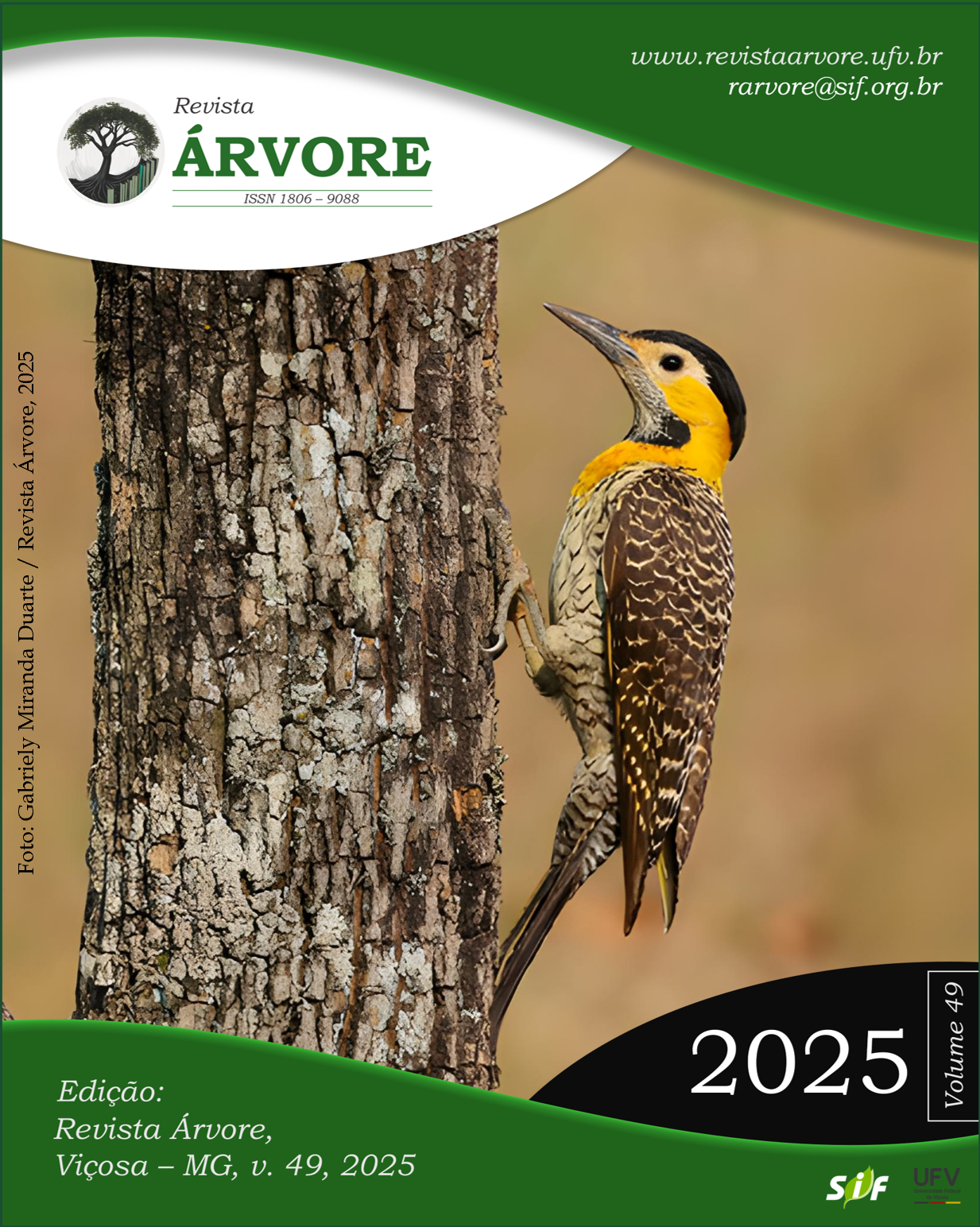Quantification and FTIR-based chemical characterization of condensed tannins extracted from the bark of tropical tree species
DOI:
https://doi.org/10.53661/1806-9088202549263864Keywords:
Phenolic compounds, Functional groups, Bark valorization, BiorefineryAbstract
The sustainable exploitation of forest species contributes to biodiversity conservation while generating income, with tannins being one of the valuable products obtained. These biodegradable phenolic compounds have multiple industrial applications, including leather tanning, wastewater treatment, adhesive production, and use in pharmaceutical and cosmetic products. The quantification and chemical characterization of condensed tannins are essential to identify species with commercial potential and determine their possible applications. This study aimed to quantify and chemically characterize the condensed tannins extracted from the bark of four tropical tree species. Bark samples from Acacia mangium, Copaifera arenicola, Hancornia speciosa, and Terminalia catappa were collected, dried, and ground to reduce particle size. The ground material was subjected to hot water extraction under boiling conditions using distilled water. Subsequently, total solids content (TSC), Stiasny index (SI), and condensed tannin content (CTC) were determined. The extracted tannins were dried to a solid form and analyzed by Fourier-transform infrared (FTIR) spectroscopy to identify the functional groups present. The SI of the analyzed species ranged from 95.34% to 55.09%, with A. mangium showing the highest SI and H. speciosa the lowest. However, despite the higher SI of A. mangium, it exhibited the lowest CTC (6.30%), while C. arenicola showed the highest CTC (14.86%). The hydroxyl (OH) group was identified in all samples by FTIR, confirming the presence of phenolic compounds such as tannins. The studied species demonstrated potential for tannin production and extraction from bark, with possible applications across various sectors. Furthermore, considering that bark is often regarded as waste, its valorization underscores the importance of further research aimed at optimizing extraction processes and promoting the sustainable use of these natural resources, with significant ecological and economic implications.
Keywords: Phenolic compounds; Functional groups; Bark valorization; Biorefinery
Downloads
Published
How to Cite
Issue
Section
License
Copyright (c) 2025 Revista Árvore

This work is licensed under a Creative Commons Attribution 4.0 International License.
All authors agreed to submit the work to Revista Árvore and granted the exclusive license to publish the article. The authors affirm that it is an original work and has not been previously published elsewhere. The scientific content and opinions expressed in the article are the sole responsibility of the authors and reflect their opinions, not necessarily representing the opinions of the editorial board of Revista Árvore or of the Society of Forest Investigations (SIF).








